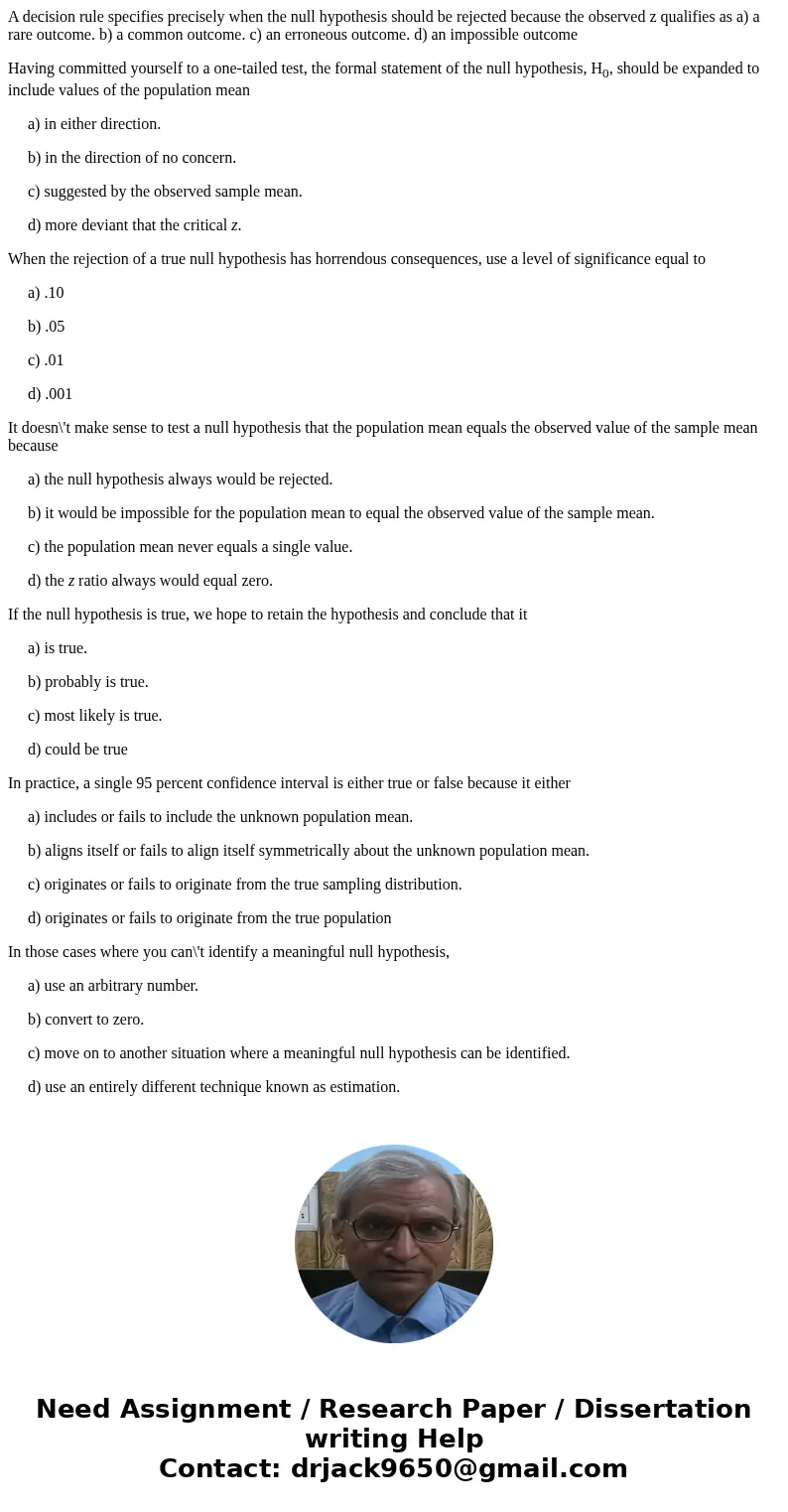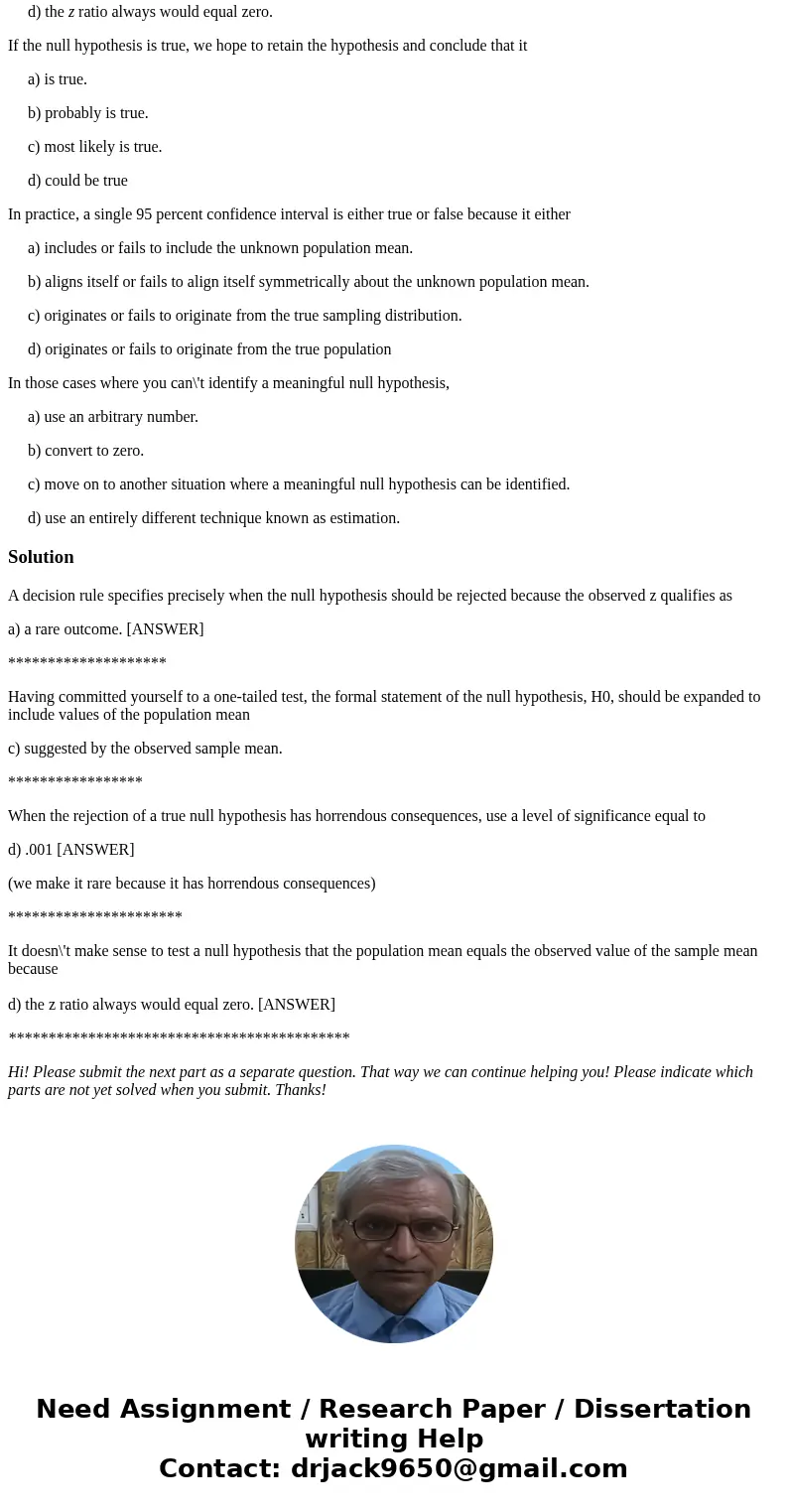A decision rule specifies precisely when the null hypothesis
A decision rule specifies precisely when the null hypothesis should be rejected because the observed z qualifies as a) a rare outcome. b) a common outcome. c) an erroneous outcome. d) an impossible outcome
Having committed yourself to a one-tailed test, the formal statement of the null hypothesis, H0, should be expanded to include values of the population mean
a) in either direction.
b) in the direction of no concern.
c) suggested by the observed sample mean.
d) more deviant that the critical z.
When the rejection of a true null hypothesis has horrendous consequences, use a level of significance equal to
a) .10
b) .05
c) .01
d) .001
It doesn\'t make sense to test a null hypothesis that the population mean equals the observed value of the sample mean because
a) the null hypothesis always would be rejected.
b) it would be impossible for the population mean to equal the observed value of the sample mean.
c) the population mean never equals a single value.
d) the z ratio always would equal zero.
If the null hypothesis is true, we hope to retain the hypothesis and conclude that it
a) is true.
b) probably is true.
c) most likely is true.
d) could be true
In practice, a single 95 percent confidence interval is either true or false because it either
a) includes or fails to include the unknown population mean.
b) aligns itself or fails to align itself symmetrically about the unknown population mean.
c) originates or fails to originate from the true sampling distribution.
d) originates or fails to originate from the true population
In those cases where you can\'t identify a meaningful null hypothesis,
a) use an arbitrary number.
b) convert to zero.
c) move on to another situation where a meaningful null hypothesis can be identified.
d) use an entirely different technique known as estimation.
Solution
A decision rule specifies precisely when the null hypothesis should be rejected because the observed z qualifies as
a) a rare outcome. [ANSWER]
********************
Having committed yourself to a one-tailed test, the formal statement of the null hypothesis, H0, should be expanded to include values of the population mean
c) suggested by the observed sample mean.
*****************
When the rejection of a true null hypothesis has horrendous consequences, use a level of significance equal to
d) .001 [ANSWER]
(we make it rare because it has horrendous consequences)
**********************
It doesn\'t make sense to test a null hypothesis that the population mean equals the observed value of the sample mean because
d) the z ratio always would equal zero. [ANSWER]
*******************************************
Hi! Please submit the next part as a separate question. That way we can continue helping you! Please indicate which parts are not yet solved when you submit. Thanks!


 Homework Sourse
Homework Sourse